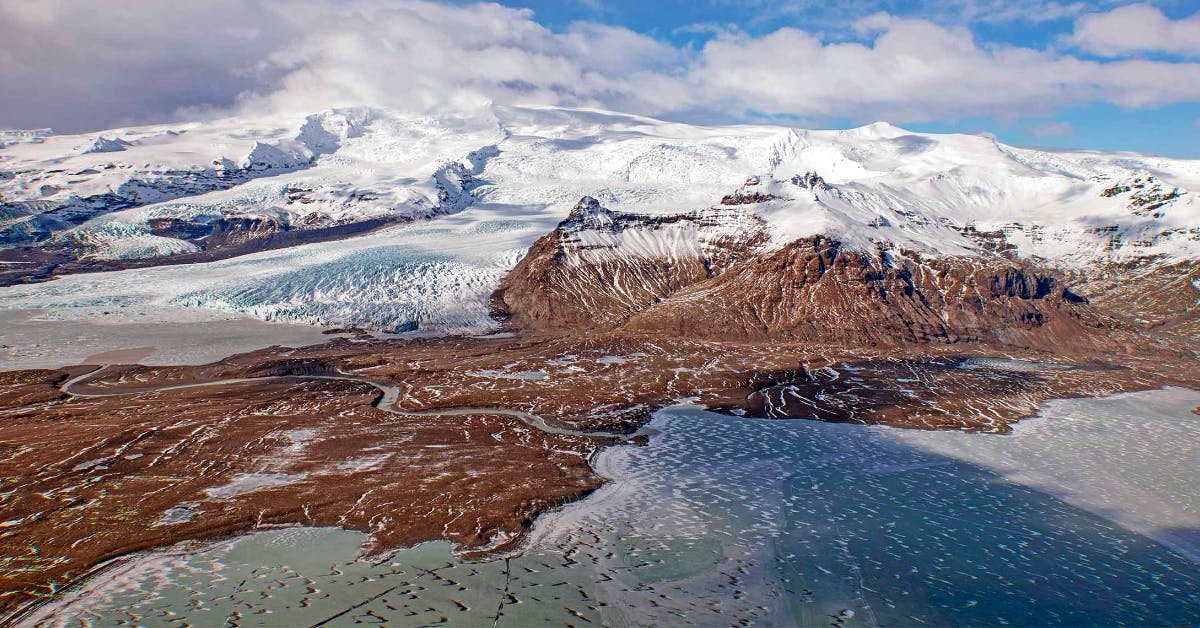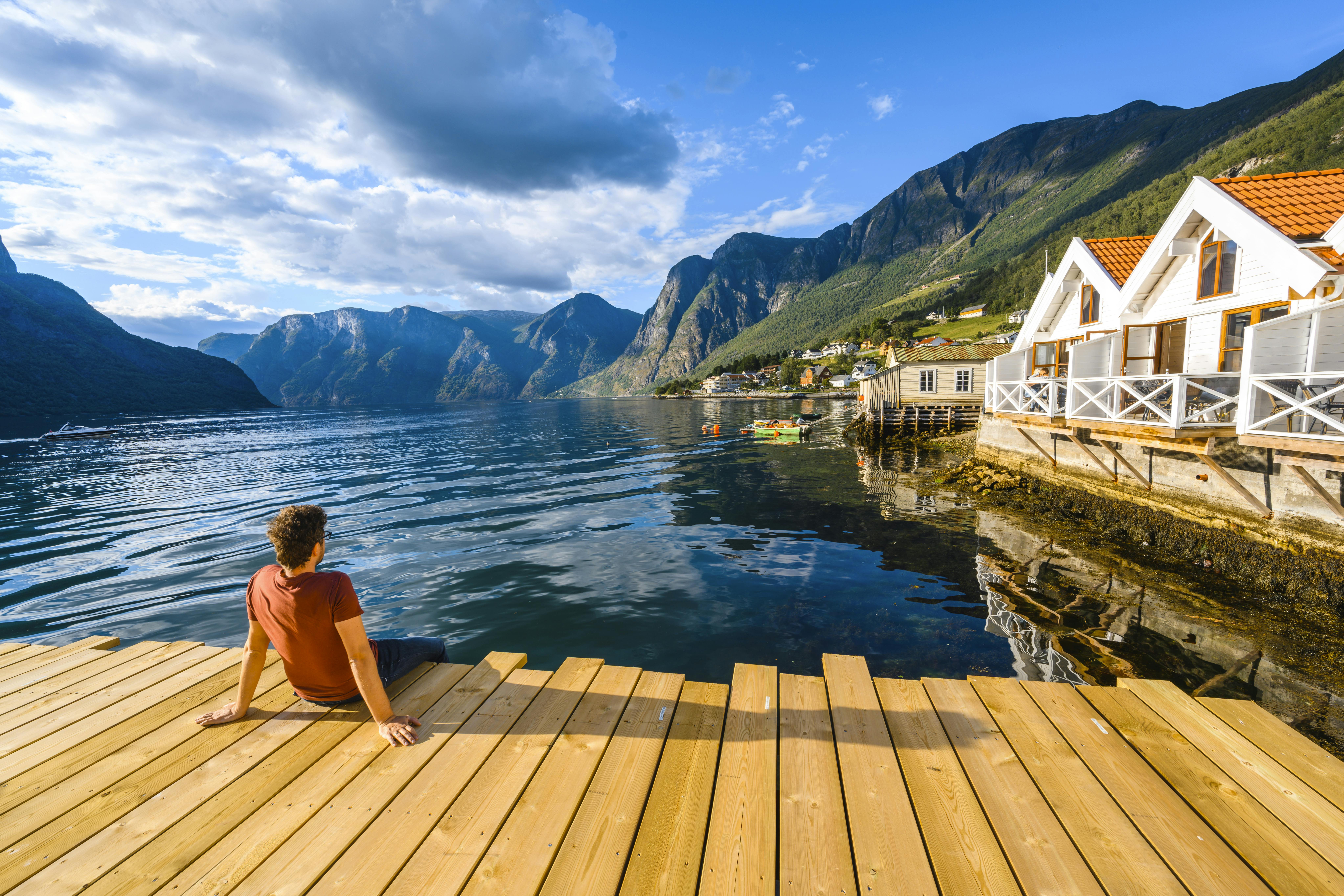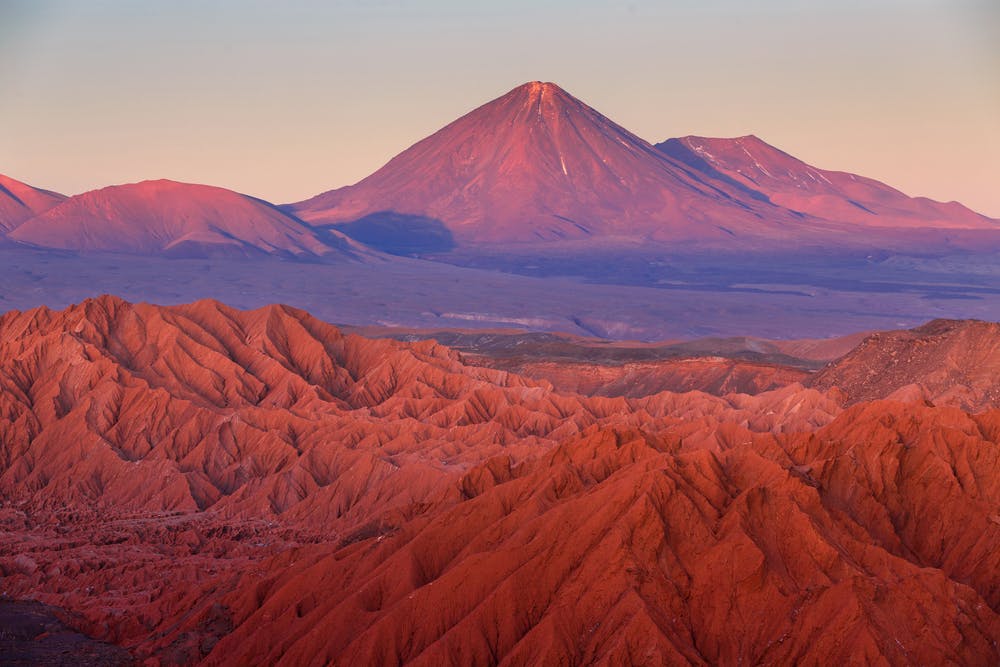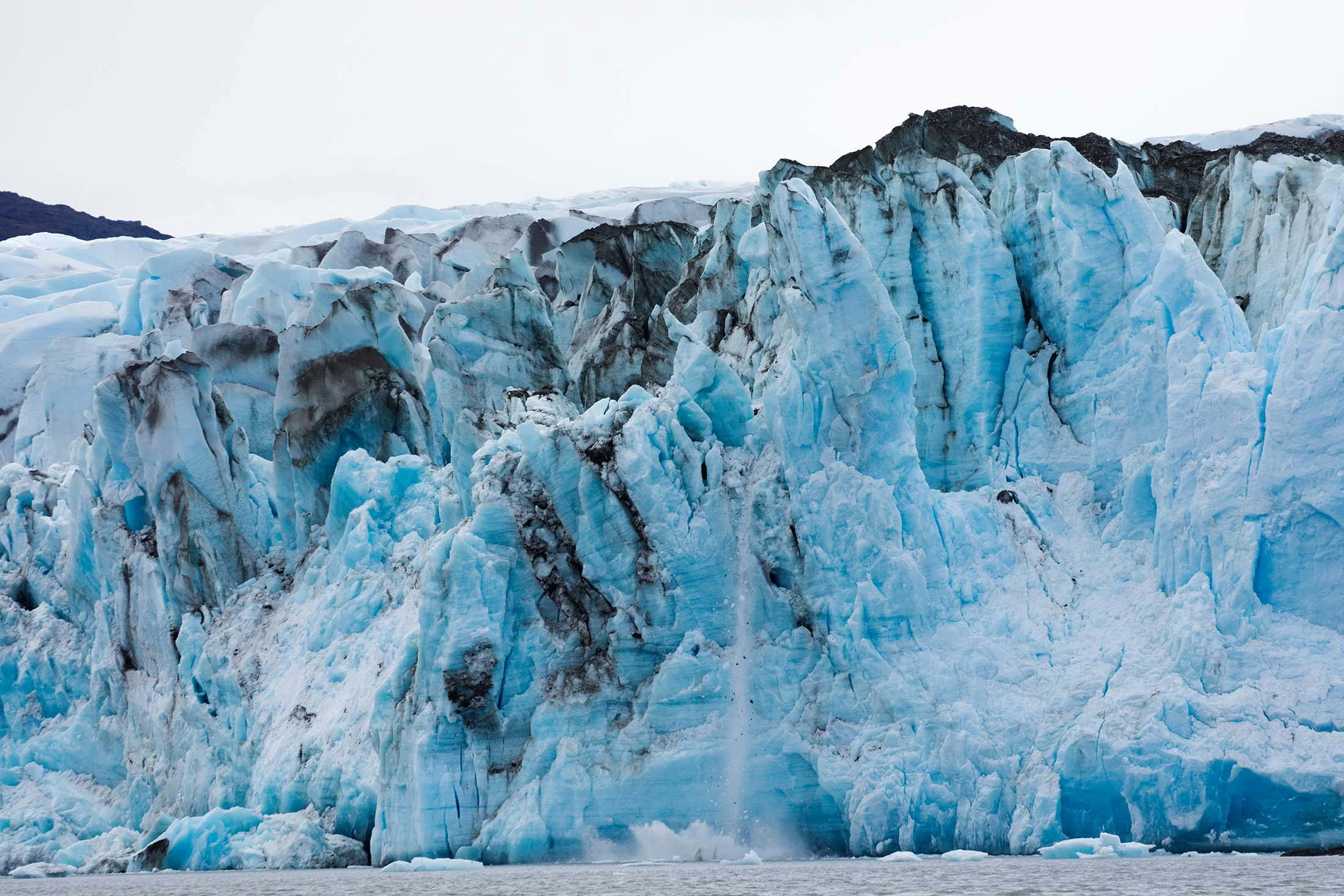Exploring the Icelandic Landscape That Inspired J.R.R. Tolkien’s Middle Earth
It’s hard to think of a country in which it’s easier to believe in myths than Iceland. After all, the Nordic country’s landscape is shaped by glaciers, lava fields, geysers and rivers whose banks forever shift and slide. It even inspired writer J.R.R. Tolkien to create the fantastical territory of Middle Earth, which features in his widely admired novels.
Perhaps the Icelandic landscape — both its starkly beautiful terrain and the folklore woven around it — is a result of its geographical location? The Atlantic island, equidistant from Norway and Greenland, straddles the Eurasian and North American tectonic plates; the two continents that rest upon them move apart “at about the same speed as our fingernails grow,” as Silversea’s onboard glaciologist and expedition expert, Jonathan Fuhrmann, puts it. Giant fissures are visible in the country’s landscape, like tears in paper.

The “land of fire and ice”
When visiting this country, you’ll readily agree that the most striking aspect of the Icelandic landscape — in a country characterized by geological extremes and oddities — is its colossal glaciers. Confirmed by Fuhrmann, glaciers cover 10 percent of the country comprising an area bigger than the island of Jamaica. Vatnajokull, a particularly vast example, is as large as all the other glaciers in Europe combined.

With crampons clamped to your feet, you can clamber over these icy mountains, with their emerald blue hearts fading to a surface white. In this land of fire and ice, many glaciers are located atop volcanoes. “Or, are some of Iceland’s volcanoes located beneath glaciers?” Fuhrmann ponders. This simmering combination periodically results in a sudden flood called a “jökulhlaup.” Powerful flows of water flood the land, intensifying waterfalls such as Dettifoss — a churning aquatic engine that is one of the world’s most potent.
This waterfall and others generate great plumes of mist that forever blur the boundary between land and sky — and create an added mystery to the Middle Earth landscapes that so captivate us. It’s a territory of uncertain divisions, echoed in another feature of Iceland’s geography: the braided river. It’s a poetic title for a watercourse of undulating, snake-like channels, between which build islands, forming and unforming as the glacial melt runs to the sea.

Geography, fables and Icelandic folklore
Iceland is quite young in geological terms. While all of its rocks were formed within the past 25 million years, its ethereal landscape has never been allowed to settle. Volcanoes, glaciers and boulder-splintering frosts lend it the air of a giant, starkly stunning artwork with which its creator is never satisfied.
The island is believed to have remained uninhabited until about 800 A.D. Since then, humans have built civilizations in this often harsh and unpredictable land, sharing the terrain with denizens of a recognizable but otherworldly realm. And today there is barely a rock formation or stream in the country that doesn’t feature in one fable or another.
Chastised trolls are a common theme. Off the southern coast of the country, beyond the black pebble beach of the somber hamlet of Vik, towering rock pillars known as “Reynisdrangar” are said to have been tardy trolls who were dragging a three-masted ship to land when they were caught by the dawn light and then turned to stone. Do the Reynisdrangar trolls sound familiar? Tolkien recounts a similar tale in “The Hobbit.”
Examples of geography inspiring Icelandic mythology are present across the island. To the north, lava frozen into tunnels and caves form the eerie landscape of Dimmuborgir. Translating to “dark castles,” this is the territory of the murderous half-ogre, half-troll Grýla and her 13 wicked sons — the Yule Lads. In western Iceland, the entire Snæfellsnes Peninsula is also named after a troll: Bárður Snæfellsás, son of a titan father and a human mother.
Examples of geography inspiring Icelandic mythology are present across the island. To the north, lava frozen into tunnels and caves form the eerie landscape of Dimmuborgir. Translating to “dark castles,” this is the territory of the murderous half-ogre, half-troll Grýla and her 13 wicked sons – the Yule Lads. In western Iceland, the entire Snæfellsnes Peninsula is also named after a troll – Bárður Snæfellsás, son of a titan father and a human mother.

Beliefs in elves still abound in Iceland
Not that such stories are all hallowed tales of yore. More than half of modern Icelanders, studies show, believe in elven creatures called “huldufólk,” or hidden people. There’s even an Iceland elf tour that you can take while you’re here. Visitors can also find out more about the Hidden People at The Elf School in Reykjavik. Magnus Skarphedinsson, its headmaster since its founding 31 years ago, says the country’s isolation has let such beliefs endure where, elsewhere, modern scientific thinking has wiped them out.
Magnus takes belief in elves seriously and considers them a boon to the island. “Elves have helped people lost in the highlands or caught between farms in crazy weather — elves took them in and gave them shelter,” he says. “Old fishermen tell tales of when, before rescue boats and weather forecasts, they’d learn from elves of a deadly storm front advancing and would resist going out to sea.”

Now that modernity has come to Iceland, though, Magnus thinks the country will lose belief in elves in a century or two. “They’re more afraid of us than ever before because we’re not as honest,” he says.
Children can still see elves, Magnus believes. “A lot of human kids play with elf kids. We lose the ability when we’re six to eight years old.” So, if you want to improve your chances of encountering an elf in Iceland — this myth-like land where such beings seem remarkably plausible — you know what to do: Bring the family and explore the Icelandic landscape that was Middle Earth’s inspiration.
Find the Icelandic landscape fascinating? Explore the country’s top sights with one of Silversea’s Northern Europe & the British Isles itineraries.



















